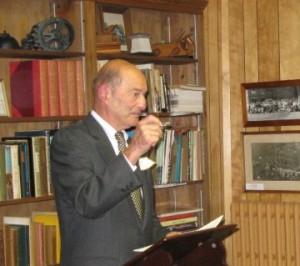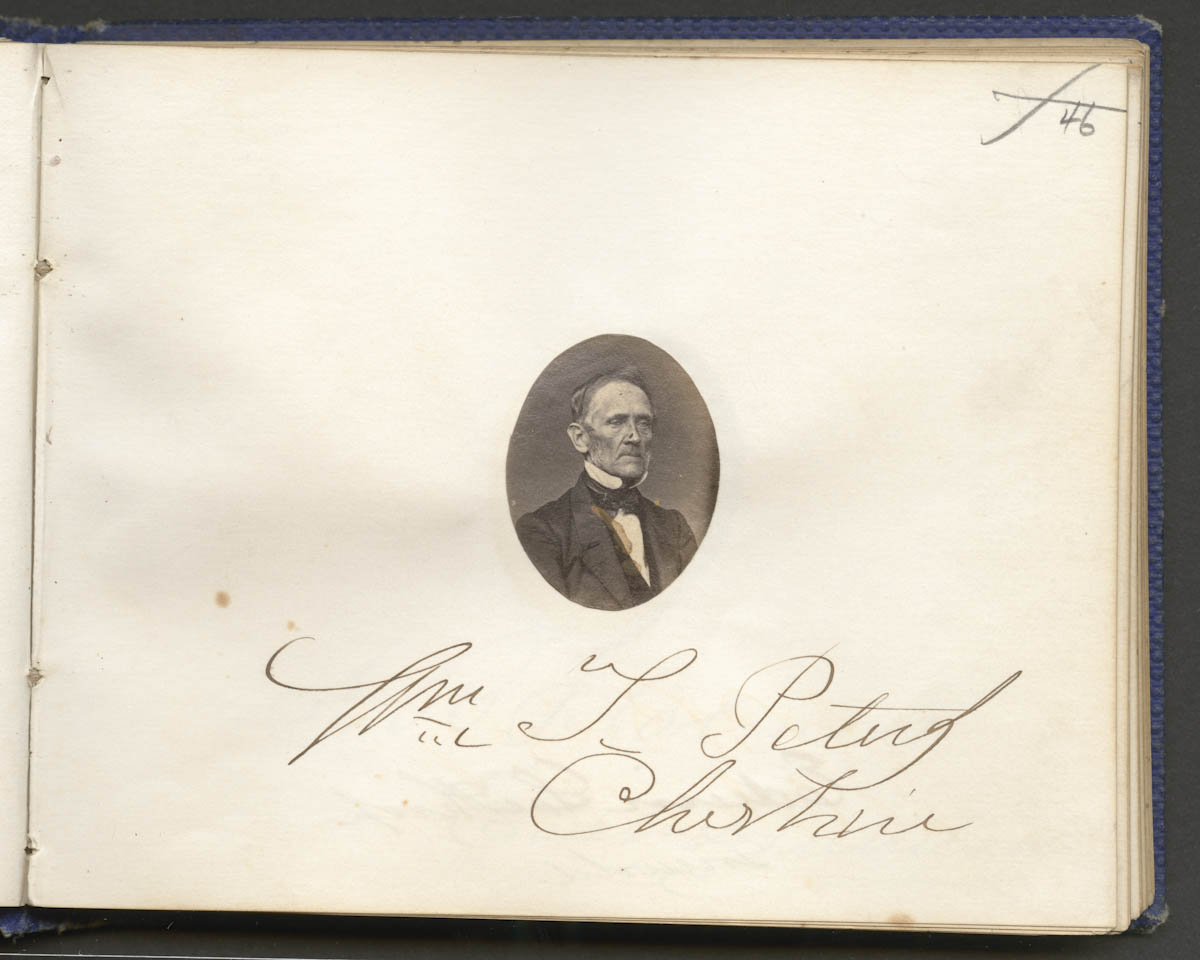Whew! I finally have a chance to just sit and write. I thought I’d have some time to get some posts written after that last presentation I did in February but boy was I wrong. I did two presentations on two different topics last weekend!
Monday night, at the Cheshire Historical Society, was one of the most fun presentations I have ever given. It was all about campanilismo in Cheshire. Campanilismo is a sense of identity among Italians that derives from one’s home. Today we are called Italian-Americans but when our parents, grandparents and great-grandparents came here they were Calabrese, Genoese, Napoletano, or San Giovannese but not Italiano. Italy didn’t become a country until 1861 and a sense of Italian unity was a long way off.
I didn’t have much in the way of a paper written because I was so absorbed in the research (it really is an addiction) I never really sat down to write it up. So I decided to wing it. I usually do anyway, no matter what I write I tend to get up there and go off the cuff. Last night was no different!
The evening started with some great classic old Italian music like Connie Francis – her grandparents were from the same village as my grandmother – and Lou Monte, along with some food. I mean really – what sort of Italian gathering would it be without food? The Historical Society provided Mr. B’s Pizza and some Italian subs from Subway. My mom brought two big bowls of fettuccine, one with gravy (spaghetti sauce) and one with butter, garlic and pecorino romano. The fettuccine had been made on Saturday by my mom, her friend Betsy and my cousin Judy. Memories of childhood came flooding back when I saw the dough bowl come out. There were also lots of pizzelles! My cousin Judy made some that she rolled into cones, and Mr. Simonetta brought a plate he had made that morning!
We set up a huge map of Italy in the front room and had guests write their family names on tags and then pin the tags to the towns where they came from. It was great seeing where folks came from. For the most part the crowd was from Southern Italy – Calabria and Campania to be exact, with a Sicilian, a Venetian and a few others mixed in.
After the food it was my turn. I have been doing research on this for months and have a ton of info in my head but I really wanted this to be interactive. I wanted to hear the stories that the audience had in instead of just spouting facts at them. So after Diane Calabro introduced me away we went…It was a riot! The notes I had prepared – the facts and figures about early Cheshire Italians quickly went out the window when I asked how many Italians were in the room and where they were from.
I never got to explain that most of the research I had done was pre-1930, focusing on the earliest Italians in Cheshire – like the Salvatore, Pivirotto, Patierno, Galucci and Dominello families who were here by 1910; Diorio, Casertano, Lombardi, Ostuno, Terzano, Tripodina, and Zello families were here by the 1920’s. And the Arisco, Casso, Fazzone, Fede, Papale, and Papandrea families were here by 1930.
 That meant I didn’t get to dig into some family histories, like the Ricciuti’s, who were an important part of old Cheshire. So Mr. Ricciuiti, please accept my humble apologies! I spoke about how the Cheshire Italians were in large part responsible for preserving Cheshire’s farming heritage and influencing our palates. The Ricciuti’s and Diorio’s played a different but still huge part in preserving Cheshire’s history – they owned the Waverly Inn. Rocco Diorio bought the Waverly Inn in 1932 and in 1937 his brother-in-law Louis D. Riccuiti brought his wife and son, Louis A. to Cheshire to help run the restaurant. The Diorio’s and Riccuiti’s saved one of Cheshire’s treasured institutions and definitely had a hand in influencing the palates of Cheshireites!
That meant I didn’t get to dig into some family histories, like the Ricciuti’s, who were an important part of old Cheshire. So Mr. Ricciuiti, please accept my humble apologies! I spoke about how the Cheshire Italians were in large part responsible for preserving Cheshire’s farming heritage and influencing our palates. The Ricciuti’s and Diorio’s played a different but still huge part in preserving Cheshire’s history – they owned the Waverly Inn. Rocco Diorio bought the Waverly Inn in 1932 and in 1937 his brother-in-law Louis D. Riccuiti brought his wife and son, Louis A. to Cheshire to help run the restaurant. The Diorio’s and Riccuiti’s saved one of Cheshire’s treasured institutions and definitely had a hand in influencing the palates of Cheshireites!
John Ostuno, another lifelong Cheshire resident, was also in attendance with his nephew Roger Ostuno. It was fantastic meeting him and hearing him talk about old Cheshire, his family, traditions and his memories of my grandparents and Uncle Sam. I got a few things wrong up there – its tough to be in front of a crowd like that and keep 1000 names straight in your head – so Mr. Ostuno, at age 87, helped keep me straight!
The stories flowed. One woman from Prospect shared about how she found her mother’s recipe for pickled eggplant tucked away in a drawer and decided to make it last fall. She described how she and the other three ladies that were with her made a day of it with beautiful, delicious results. Joy Deegan, another lifelong Cheshireite made sure I mentioned the Tripodina’s and how they were the only non-Catholic Italians in town back in the day.
 The most heated topic was whether gravy is red or brown. The Rinaldi’s, who hail from Napoli (forgive me if I got that wrong!), said gravy is brown while the rest of the crowd said gravy is red. We finally decided it was all in where you came from, not just the region but the town.
The most heated topic was whether gravy is red or brown. The Rinaldi’s, who hail from Napoli (forgive me if I got that wrong!), said gravy is brown while the rest of the crowd said gravy is red. We finally decided it was all in where you came from, not just the region but the town.
We talked about where we came from as well and how so many of the Southern Italian immigrants came in groups. My grandmother’s village, San Giovanni di Gerace, Reggio Calabria, Calabria lost half its population to Meriden. In fact in 1967 the Meriden Record ran an article titled “San Giovanni – Family Birthplace of Over 2000 Meriden Residents!” Papandrea, Luca, Dominello, Fazzolari, Barillaro, Carabetta, Mesite, Galluzzo, Letteri, Muratore and Vumbaco were a few of the names mentioned. In Cheshire the Diorio, Salvatore, Testa and Zello families all came from Cercemaggiore, Campobasso, Molise.
While I talked about how Italians preserved Cheshire’s agricultural heritage, I never really explained how. Most of these early immigrants were contadinos or farmers to start with. They often worked doing manual labor, like road construction when they got here, but once they purchased land they returned to their roots. However they weren’t just farming for themselves, they engaged in truck farming or smaller scale market gardens. Truck farms grew produce to sell at markets and used trucks to haul the produce to markets, shipyards or railways like the New York-New Haven railroad that ran through town. All of the early Cheshire Italians ran farms and many of them are still going – the Arisco’s have been running Arisco Farms for over 100 years!
All in all was a great night. The most important thing that I forgot – because I ran out of time – was to say thank you to all the wonderful people that came out and participated in the evening. A special thank you to John Ostuno and Joy Deegan for their memories of old Cheshire (and thanks to Roger for bringing his uncle!). Thanks to Diane Calabro for explaining the custom of pizzagaina and thanks to Mr. Simonetta & Judy Craig for the pizzelles and to my mom, Betsy & Judy for the fettuccine. And to the four ladies in the front row for their wonderful stories. Last but not least thanks to the Cheshire Historical Society for having us!



